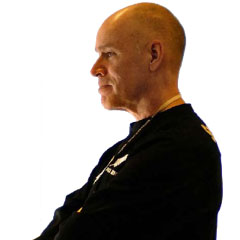Agile
How Do I Build an Agile Organization Part 1
Thursday, March 3, 2016

|
Ken Schwaber |
This is the first in a three article series on how to build an Agile organization. This first article discusses: “What is Scrum certification? Can you count on it as meaningful in selecting people?”
- CIOs need to embrace Agile development as quickly as possible. Agile has the capability to transform IT-business relationships as well as have a positive effect on IT value delivery – “CIOs Need To Embrace Agile …”, Information Week, July 2, 2015.
- Getting experienced outside help … has a positive impact to achieve claimed benefits and similar findings have caused most organizations adopting Agile to reach outside for help - “Agile Survey Research”, Forrester Research, Diego Lo Giudice, September 19, 2013.
The above referenced resources and similar findings demonstrate why most organizations adopting Agile reach outside for help.
Many organizations choose the Scrum process to begin their Agile journey. They search for people or consulting companies that have experience with Scrum to help them. They find these people at conferences, through word of mouth, or the traditional search firms and job postings. Some people are differentiated as certified - “Certified Scrum Masters.”
What is Scrum Certification?
What is Scrum certification? What is a Certified Scrum Master? Can you rely on the certification to select skilled, knowledgeable people to help you?
Until 2009, the answer was usually “no.” People who were Certified Scrum Masters sometimes were highly competent Scrum Masters and consultants. However, many more were rank beginners, just beginning to understand Agile and Scrum.
A Customer View
In 2006, while I was at the Scrum Alliance, I received a call from an angry VP of software development. To quote, “I was looking for a Scrum Master to help me implement Agile. I had several people apply. I selected the person certified by your organization as a Certified Scrum Master (CSM). The certification from an organization that you headed clearly differentiated him, so I hired him.”
He went on to say: “I soon started getting complaints from people within my IT group and our customers. The person I hired did not understand what to do, how to form teams that would develop software. He didn’t understand how to help our customer being a Product Owner. His projects were in trouble. The team was floundering and there were no increments of working software for me to review. The customer was furious because, to him, Agile seemed worse than waterfall. At least in waterfall he knew what he had to do.”
The VP told me that his new Certified Scrum Master had set back his Agile initiative, causing confusion and skepticism. He had hired what seemed to be the right guy, because he was certified, but the results didn’t support his decision. His organization had acquired a bad taste for Scrum.
This VP made the assumption that the CSM certification meant the person was qualified to help his organization. He found out it only meant the person was certified as having attended a Scrum Alliance scrum master class. At the end of the class he had received a certification of attendance called Certified Scrum Master (CSM).
My Reaction
I was appalled. People asked for certification of attendance from Scrum Alliance. We provided them so they could be reimbursed. I had never expected that the certifications would be used as a means of demonstrating expertise.
There was no test or assessment to determine what he had learned during or prior to the class. Nothing about the certification backed the VP’s assumption that he knew how to apply Scrum to software development projects and problems.
The CSM Scrum certification had gotten out of hand. Organizations were expecting a certification to mean that a person was certified as being able to competently use Scrum to develop software. Instead they were getting people whose only uniform qualification was attending a class. Some were competent in Scrum software development because of their experience outside and prior to the class, but many were not.
I had released a problem on the marketplace. Many organizations needed people to help them use Scrum. In the absence of any other means, they relied on our “certification.” This outcome was creating a sour taste for Scrum.
What To Do Next
I stepped back and figured out what needed to be done. First and foremost, I knew that I had to change the proof of attendance from “certified” to “receipt.”
Secondly, I had to create a valid certification program. Only people that understood Scrum and were proficient in using it to develop software would be certified. If I was going to make progress in my mission of improving the profession of software development, certification had to mean more than attending a two-day class. Certification had to be a reliable indication of professional competence.
While heading Scrum Alliance in 2008 and 2009, I initiated work to improve our certifications. Unfortunately, to succeed in my mission, I had to leave Scrum Alliance in September, 2009, and form a new organization, Scrum.org where I would have the freedom to change what certification really meant. You can learn more about this in my blog on why I made the switch.
In Part 2 of this article series I describe how I created a family of new, meaningful, Professional certifications. Certifications that you and others could rely on. They measurably demonstrate your knowledge of Scrum and your ability to develop software using Scrum.
Learn More about Scrum.org.
Read more: http://appdevelopermagazine.com/partner/link/?ref=
This content is made possible by a guest author, or sponsor; it is not written by and does not necessarily reflect the views of App Developer Magazine's editorial staff.

Become a subscriber of App Developer Magazine for just $5.99 a month and take advantage of all these perks.
MEMBERS GET ACCESS TO
- - Exclusive content from leaders in the industry
- - Q&A articles from industry leaders
- - Tips and tricks from the most successful developers weekly
- - Monthly issues, including all 90+ back-issues since 2012
- - Event discounts and early-bird signups
- - Gain insight from top achievers in the app store
- - Learn what tools to use, what SDK's to use, and more
Subscribe here









